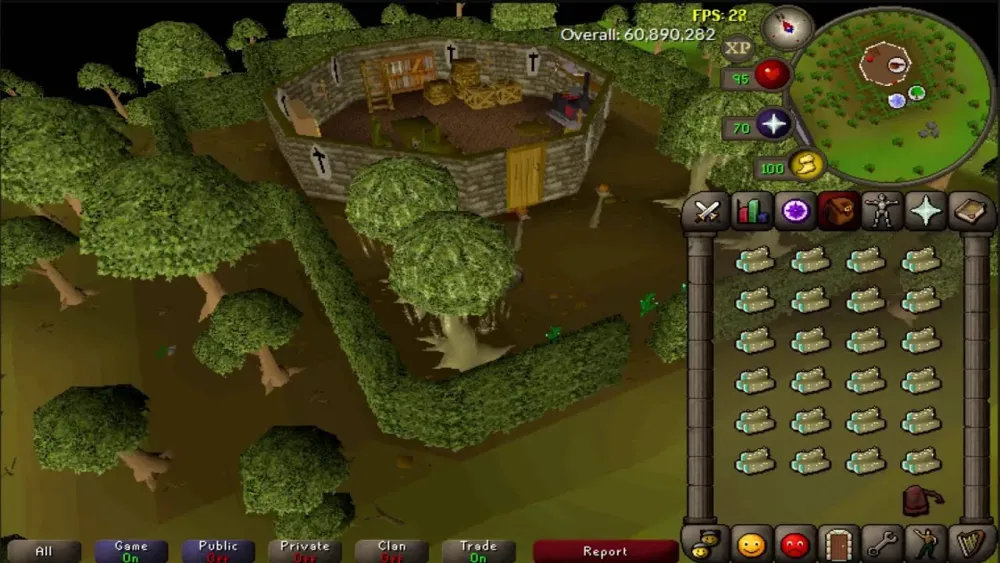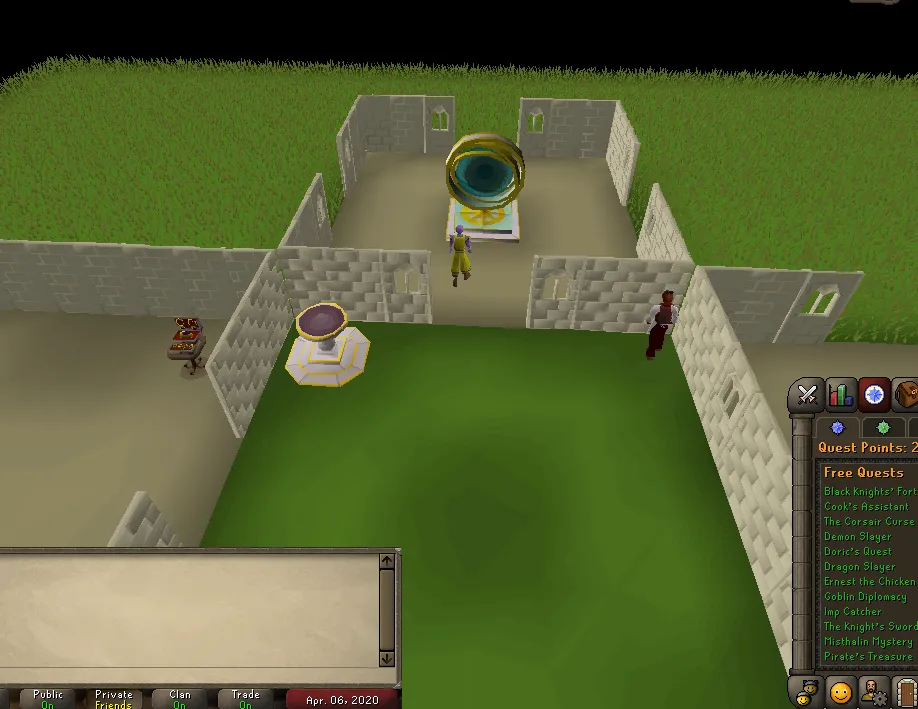Your cart is empty
Mastering the Art of Buy Low Sell High in OSRS

The Grand Exchange is a central trading hub in Old School RuneScape (OSRS) where players can buy and sell items with one another. Understanding how to navigate this marketplace is crucial for players looking to maximize their profits. The principle of “buy low, sell high” is the cornerstone of successful trading, allowing players to accumulate wealth and resources efficiently. In this article, we will explore the intricacies of the Grand Exchange and provide insights into market trends that can help you master the art of trading in OSRS.
To successfully engage in buying low and selling high in OSRS, players must develop a keen understanding of market trends. These trends are influenced by various factors, including player demand, item rarity, and in-game updates. Analyzing these elements can give traders an edge in predicting price fluctuations and making informed decisions.
One of the first steps in understanding market trends is to familiarize yourself with the most traded items in the Grand Exchange. Items like ores, potions, and gear often have predictable price movements based on player activity and game updates. For instance, when a new boss is released that drops unique items, the demand for related materials may spike, leading to higher prices. Conversely, after the hype settles, prices often drop as supply increases.
Another critical aspect is to monitor the price history of items. The Grand Exchange interface provides historical data that shows how prices have changed over time. Look for patterns in this data to identify seasonal trends or recurring spikes in demand. For example, certain items may see increased demand during holiday events or double experience weekends. By tracking these trends, you can anticipate when to buy items at their lowest prices and when to sell them for maximum profit.
Additionally, engaging with the community can provide insights into market sentiment. Forums, social media, and trading Discord servers often discuss current trends and price predictions. Players frequently share their experiences and tips, which can be invaluable for understanding the market’s dynamics. Joining these discussions can help you stay informed about shifts in player interest and potential profit opportunities.
Lastly, be aware of external factors that can affect the economy in OSRS. Updates to the game, whether they introduce new items, change mechanics, or adjust drop rates, can significantly impact prices. Staying updated on patch notes and community discussions can help you make timely decisions. By combining your knowledge of market trends with active participation in the OSRS community, you can master the art of buying low and selling high effectively.
Identifying Items for Buy Low Sell High Strategies

When it comes to mastering the buy low, sell high strategy in Old School RuneScape (OSRS), the first step is identifying the right items to trade. Not all items are created equal, and some will yield higher profits than others. Here are some crucial tips to help you pinpoint those perfect trading opportunities:
- Demand and Popularity: Focus on items that are in high demand. This includes gear upgrades, potions, and materials for crafting. Items related to current game events or updates often see spikes in popularity.
- Market Trends: Pay attention to market trends. Some items may be seasonal or fluctuate in value based on player activity. For instance, during a double XP event, crafting materials might see a surge in demand.
- Price History: Look at the historical prices of items. If an item has recently dipped, it could bounce back, making it a candidate for buying low.
- Trade Volume: Check the trade volume on the Grand Exchange. High trade volume usually indicates a stable market, while low volume can suggest volatility.
- Flipping Potential: Not all items are suitable for flipping. Aim for items with a price margin that allows for a reasonable profit after the sale.
By analyzing these factors, you can better identify the items that will help you execute successful buy low, sell high strategies and grow your wealth in OSRS.
Tools and Resources for Market Analysis
To effectively engage in buy low, sell high trading in OSRS, utilizing the right tools and resources is crucial. Here’s a rundown of some excellent options that can enhance your market analysis:
| Tool/Resource | Description | Benefits |
|---|---|---|
| GE Tracker | A comprehensive tool for tracking Grand Exchange prices and trends. | Real-time data, price alerts, and historical data analysis. |
| OSBuddy | A popular RuneScape client that provides market data and graphs. | In-game overlays that help visualize market trends without leaving the game. |
| RuneScape Wiki | A community-driven resource with extensive information on items. | Offers insights into item usage, crafting, and potential demand. |
| Discord Communities | Various Discord servers dedicated to OSRS trading. | Real-time discussions and tips from experienced traders. |
By leveraging these tools, you can gain a competitive edge in the OSRS market, making informed decisions that align with your buy low, sell high strategy. Happy trading!
Step-by-Step Guide to Executing Buy Low Sell High Trades
Ready to dive into the exciting world of trading in Old School RuneScape (OSRS)? Here’s a simple, step-by-step guide to help you execute those buy low, sell high trades like a pro!
- Research the Market: Start by identifying the items you want to trade. Use websites, forums, or in-game tools to check their price trends. Look for items that have consistent price fluctuations.
- Set Your Budget: Decide how much gold you can afford to invest without risking your entire bank. This will help you avoid impulse buying.
- Find the Low Prices: Monitor the Grand Exchange for price drops. Look for items that have recently fallen in price. You can use tools like price graphs to find trends.
- Make Your Purchase: Once you find a good price, buy the item! Ensure you’re buying at a low enough price to guarantee a profit when you sell.
- Wait for the Right Moment to Sell: Keep an eye on the market. Wait until the item’s price increases, ideally to a point that exceeds your buying price significantly.
- List Your Items for Sale: When the price is right, list your items on the Grand Exchange. Set a competitive price to attract buyers while ensuring you make a profit.
- Reassess and Repeat: After selling, reassess your strategy. Learn from your trades and adjust your approach for better results in future transactions.
By following these steps, you can effectively master the buy low, sell high strategy in OSRS and watch your wealth grow!
Common Mistakes to Avoid When Trading
Even seasoned traders can stumble upon some common pitfalls. Here’s a list of mistakes to steer clear of while trading in OSRS:
- Ignoring Market Trends: Failing to research and understand market trends can lead to poor trading decisions. Always stay informed!
- Overreacting to Price Changes: It’s easy to panic when an item’s price drops. Don’t rush to sell. Sometimes, prices rebound quickly.
- Not Diversifying Your Portfolio: Putting all your gold into one item can be risky. Diversify your trades to spread the risk.
- Setting Unrealistic Prices: Listing items too high can discourage buyers. Be realistic with your pricing based on market conditions.
- Neglecting to Track Your Profits: Failing to keep track of your trades can prevent you from understanding your overall performance. Use a spreadsheet or a simple notepad to log your trades.
- Being Impatient: Trading takes time. Don’t rush into buying or selling. Patience is key for finding the best prices.
- Forgetting Transaction Fees: Always consider the Grand Exchange fees when buying and selling. These can eat into your profits if you’re not careful!
Avoiding these common mistakes will help you develop a more successful trading strategy in OSRS. Happy trading!
Advanced Techniques for Maximizing Profits
Mastering the art of Buy Low Sell High in Old School RuneScape (OSRS) isn’t just about knowing when to buy and sell; it’s about employing advanced techniques that can help you maximize your profits. Here are some strategies to consider:
- Market Analysis: Always keep an eye on the Grand Exchange (GE) trends. Use tools like GE Tracker or the OSRS Wiki to track price fluctuations over time. Understanding the market can help you identify the best times to buy and sell.
- Diversification: Don’t put all your eggs in one basket. Invest in multiple items to spread risk. This way, if one item’s price drops, your other investments might still be profitable.
- Flipping: Buy items at a lower price and sell them at a higher price quickly. This requires quick decision-making and a good sense of the market. Items like ores, logs, and potions often have great flipping potential.
- Timing: Pay attention to in-game events and updates. Prices often fluctuate around major updates or events. Buy items before an update when prices are low and sell them afterward when demand increases.
- Networking: Join OSRS trading communities on platforms like Discord or Reddit. Engaging with other traders can provide insights into market trends and upcoming opportunities.
By implementing these advanced techniques, you can enhance your trading skills and maximize your profits in OSRS.
Case Studies: Successful Buy Low Sell High Transactions
Real-life examples can provide valuable insights into how effective Buy Low Sell High strategies can be. Here are a couple of case studies that highlight successful transactions in OSRS:
| Item | Buying Price | Selling Price | Profit | Timeframe |
|---|---|---|---|---|
| Dragon Scimitar | 1,000,000 GP | 1,200,000 GP | 200,000 GP | 1 Week |
| ZGS (Zamorak Godsword) | 2,500,000 GP | 3,000,000 GP | 500,000 GP | 2 Weeks |
In the first case, a player identified the drop in Dragon Scimitar prices during an event, bought low, and sold high after the event ended. Similarly, the second case highlights a player who bought the ZGS during a market dip, capitalizing on a subsequent price surge.
These case studies show that with the right strategy and timing, you can achieve significant profits through careful trading in OSRS. Keep learning, experimenting, and adapting your strategies to continue succeeding in the game!
Mastering the Art of Buy Low Sell High in OSRS
In Old School RuneScape (OSRS), trading is a crucial aspect of gameplay that can significantly enhance your wealth and resources. The principle of “buy low, sell high” is fundamental to successful trading. This strategy involves purchasing items at a lower price and selling them for a profit. Here are some essential tips to master this art:
- Market Research: Always monitor the Grand Exchange (GE) prices. Use tools like price checkers and websites that track item prices to identify trends.
- Timing: Buy items during off-peak hours when prices may be lower. Conversely, sell during high-demand periods.
- Flipping: Focus on flipping items, which involves buying items, holding them briefly, and selling them for a higher price. Popular items for flipping include:
| Item | Average Buy Price | Average Sell Price |
|---|---|---|
| Dragon Scimitar | 800,000 GP | 1,000,000 GP |
| Saradomin Brew | 13,000 GP | 15,000 GP |
| Amethyst Bolt Tips | 1,000 GP | 1,200 GP |
Understanding Supply and Demand: Know which items are in high demand and how this affects their prices. Seasonal events and updates can drastically change market dynamics.
Networking: Engage with other players and join trading communities. Sharing insights can provide valuable information on market trends.
By mastering these strategies, players can navigate the OSRS economy effectively, maximizing their profits and enhancing their gaming experience.
Conclusion: Successfully applying the buy low, sell high strategy in OSRS requires continuous learning and adaptation to market changes. Keep practicing, and you’ll find yourself becoming a proficient trader in no time.
